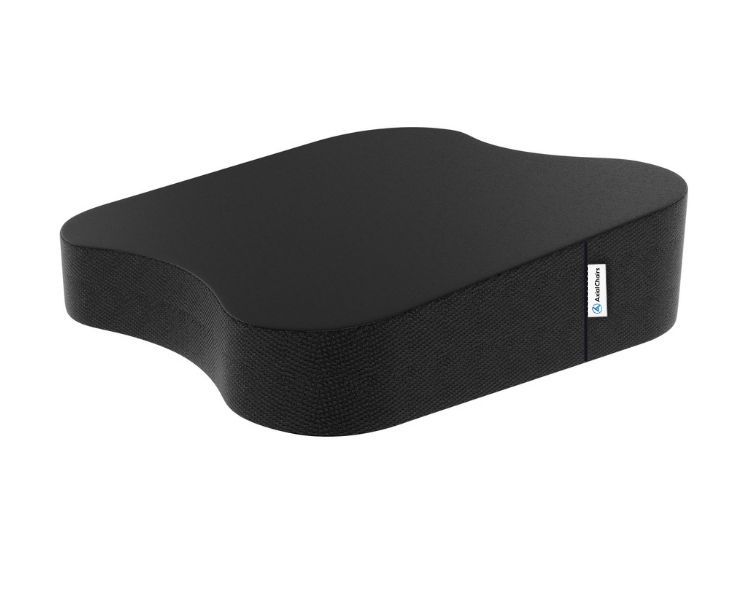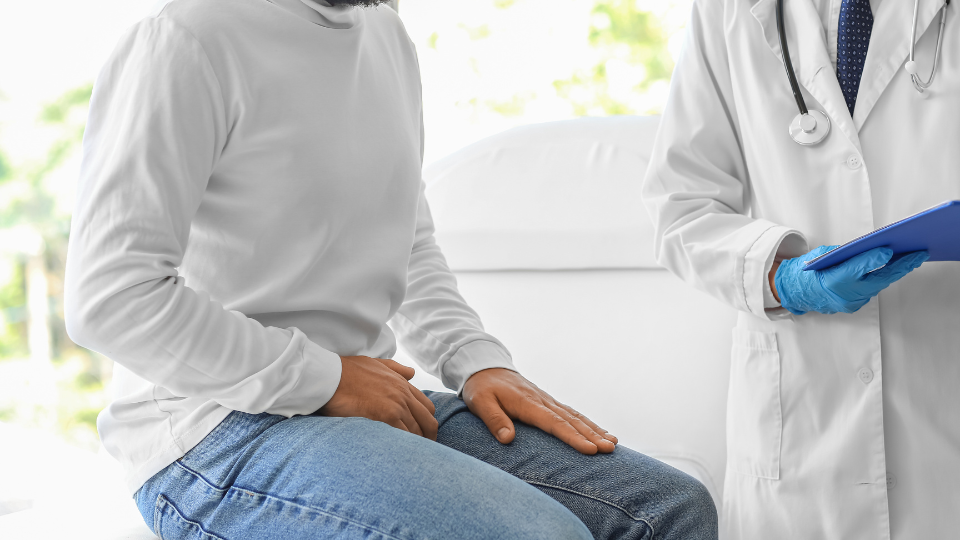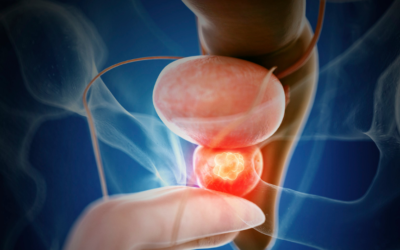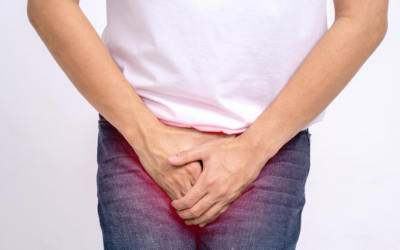It’s a debate as old as time, and one that continues to leave men all over the world wondering: is sitting or standing better for prostate health? While there hasn’t been enough definitive research to conclusively answer this question, it’s definitely worth exploring in more detail. From studies investigating the effects of sedentary lifestyles on overall well-being to recommendations about how much exercise should be incorporated into your daily life—there are numerous considerations at play when it comes to understanding optimal physical activity levels for maintaining good prostate health. Keep reading if you want to learn more about how sitting versus standing might influence prostate longevity and function.
As a general rule, standing is generally better for prostate health, as it improves blood flow and reduces pressure on the gland. However, a balance between sitting and standing is ideal, with regular breaks and physical activity.
Allow me to introduce you to the most effective remedies for back discomfort. With more than 30 years in the chiropractic field, coupled with my ergonomist background, I have acquired extensive knowledge in posture improvement. My contributions include a published book, national television appearances, and the creation of multiple solutions to enhance comfort while seated. I have also successfully crowdfunded ergonomic seat cushions through Kickstarter. Benefit from my expertise as I provide insights that could reduce or even eliminate your discomfort.
The Prostate: A Brief Overview
The prostate is a small, walnut-shaped gland located just below the bladder in men. It plays a vital role in the male reproductive system, producing the fluid that nourishes and transports sperm during ejaculation. As men age, the prostate can become susceptible to various issues, including prostate cancer, prostatitis, and benign prostatic hyperplasia (BPH).
I’ve written a complete hands-on review about the Best Seat Cushion for Prostate Relief and here are some of the issues that I ran into!
All Day Comfort & Support
The Impact of Sitting on Prostate Health
Prolonged Sitting and Prostate Problems
Modern lifestyles often involve long hours of sitting, whether at work, while commuting, or during leisure activities. Research suggests that prolonged sitting can have negative effects on prostate health, potentially increasing the risk of developing prostate-related issues.
Prostate Cancer
Some studies have found a correlation between prolonged sitting and an increased risk of developing prostate cancer. One possible explanation is that sitting for extended periods can lead to obesity, which is a known risk factor for prostate cancer.
Prostatitis
Prolonged sitting can also contribute to the development of prostatitis, an inflammation of the prostate gland. Sitting for long periods can cause pressure on the pelvic area, reducing blood flow to the prostate and potentially triggering inflammation.
Benign Prostatic Hyperplasia (BPH)
BPH is a non-cancerous enlargement of the prostate gland that can cause urinary symptoms. Long hours of sitting may exacerbate BPH symptoms, as pressure on the pelvic area can make it more difficult to empty the bladder completely.
Difficulty Urinating While Sitting Male
Difficulty urinating while sitting down can be a sign of an underlying medical condition, such as an enlarged prostate or a urinary tract infection. Other symptoms may include a weak stream, dribbling, or frequent urination. It’s important to seek medical attention if you’re experiencing any of these symptoms to prevent further complications. Your doctor may recommend medication or lifestyle changes to help manage your symptoms.
Is It Unhealthy to Pee Standing Up?
There is no definitive answer to whether it’s unhealthy to pee standing up. However, some studies suggest that urinating while standing up can increase the risk of developing urinary tract infections, especially in women. This is because when you stand up, the urine is more likely to splash back onto your body, potentially introducing bacteria into the urinary tract. If you choose to pee standing up, it’s important to maintain good hygiene practices to minimize the risk of infection.
Is It Bad for a Man to Urinate Sitting Down?
Urinating while sitting down can have several benefits for men, including reducing the risk of prostate problems and improving bladder emptying. Additionally, it may be more comfortable for some men who experience difficulty urinating while standing up. However, there is no definitive answer to whether it’s bad for a man to urinate sitting down. It ultimately comes down to personal preference and what works best for your body.
Is Peeing Standing Up Bad for Pelvic Floor?
Peeing standing up may put additional strain on the pelvic floor muscles, which can lead to problems such as urinary incontinence or pelvic organ prolapse. However, this is more of a concern for women than men, as men’s pelvic floor muscles are typically stronger. If you experience any symptoms of pelvic floor dysfunction, such as pain or discomfort in the pelvic area, it’s important to speak with your doctor to determine the underlying cause and appropriate treatment options.
Benefits of Urinating in Sitting Position
There are several benefits to urinating in a sitting position, regardless of gender. For one, it can reduce the risk of urinary tract infections by minimizing the amount of bacteria that enters the urinary tract. Additionally, it can improve bladder emptying and reduce the risk of prostate problems in men. Sitting down to pee can also be more comfortable for some individuals, especially those with mobility issues or who experience difficulty urinating while standing up. Ultimately, whether you choose to pee standing up or sitting down is a personal preference, but it’s important to prioritize your health and comfort when making this decision.
Research on the topic suggests that sitting down to urinate could help them empty their bladders more effectively, resulting in a significantly lower post-void residual volume. This is especially beneficial for men with lower urinary tract symptoms or benign prostatic hyperplasia (BPH). Additionally, sitting or standing to pee can have an impact on men’s prostate health. While research is inconclusive, some studies suggest that sitting to pee can lower the risk of prostate cancer, as it may reduce pressure on the prostate gland. However, more research is needed in this area to determine the best course of action for maintaining prostate health.
It’s important to note that regardless of whether you choose to sit or stand, maintaining good hygiene practices is key to preventing the spread of bacteria and reducing the risk of infection. This includes wiping thoroughly and washing your hands before and after using the restroom. Additionally, if you experience any symptoms of prostate problems, such as difficulty urinating or frequent urination, it’s important to speak with your doctor to determine the underlying cause and appropriate treatment options. Prioritizing your health and well-being should always be your top priority.
Black Friday: 35% Off Today
Typical Delivery 1-3 Days
The Benefits of Standing for Prostate Health
Improved Blood Flow
Standing helps promote better blood flow to the pelvic region, reducing the risk of inflammation and other prostate problems. Improved blood flow can also aid in the prevention of erectile dysfunction, which can be associated with prostate issues.
Strengthening Pelvic Floor Muscles
Standing engages the pelvic floor muscles, which can help maintain better prostate health. Strong pelvic floor muscles can improve bladder control and reduce the severity of urinary symptoms related to BPH.
Reducing Inflammation
Standing more often during the day can help reduce inflammation in the prostate gland. This may lower the risk of developing prostatitis and other prostate-related issues.
Balancing Sitting and Standing
Implementing Standing Breaks
To minimize the negative effects of prolonged sitting, take regular standing breaks throughout the day. Aim for at least one break every hour, where you stand up and move around for a few minutes. This will help improve blood flow, reduce pressure on the pelvic area, and give your pelvic floor muscles a chance to engage.
Using a Standing Desk
A standing desk can be a great way to incorporate more standing into your daily routine. Adjustable standing desks allow you to easily switch between sitting and standing positions, promoting better posture and reducing the strain on your pelvic area.
Engaging in Regular Exercise
In addition to incorporating standing breaks and using a standing desk, regular exercise is crucial for maintaining overall health and promoting prostate health. Aim for at least 150 minutes of moderate-intensity aerobic exercise per week, along with strength training exercises that target the pelvic floor muscles.
Seat Cushion for Prostate SupportAxial Ergonomic Seat Cushion® | Seat Chair Wedge
Quick Guide: A 30-Second Summary

All Day Comfort & Support
Product Name
Axial Designs™ Seat Cushion
Price
$149
Warranty
1 Year
Type
Posture Wedge
Top Layer
100% Natural Latex (Molded)
Bottom Layer
High-Density Foam
Top Material
Isometric Grippy Vegan Leather
Bottom Material
Non-Slip Material
Side Material
3D Breathable Fabric
Summary
In summary, there is evidence suggesting that sitting and standing both can have an impact on your prostate health. Sitting for long periods of time is likely to cause increased pressure on the lower body while standing can reduce muscle tension in the back, buttocks and legs. Additionally, sitting can increase inflammation in the pelvic area whereas standing increases circulation by stimulating different muscles in the area.
Exercise has also been linked to improved prostate health as it helps strengthen muscles in the pelvic region and reduces the risk of some illnesses such as cancer and cardiovascular disease. Ultimately, it is important to pay attention to which activity works best for you; alternating between standing and sitting throughout the day may be beneficial for overall prostate health. Ultimately, everyone’s body is different so it’s important to speak with a doctor if you notice any changes or unusual sensations in your prostate area. With proper attention to lifestyle habits and nutrition, you can work towards improving your overall prostate health and well-being.






